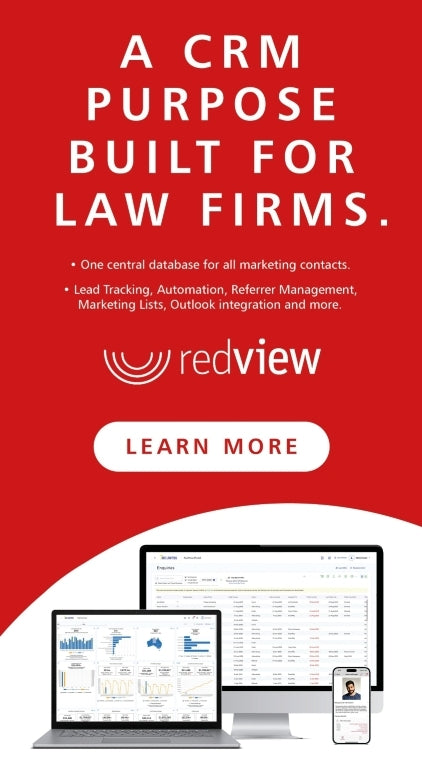
KYC in the Legal Sector: Compliance Without Disruption
Australia’s Tranche 2 anti-money laundering and counter-terrorism financing (AML/CTF) reforms are no longer a distant possibility; they’re coming into force on 1 July 2026.
That doesn’t give legal professionals much time to implement rigorous, auditable Know Your Customer (KYC) procedures that are ready to scale.
And the stakes are high. Once Tranche 2 is enacted, firms that handle certain types of work and fail to meet their obligations may face serious penalties, including fines, audits, reputational damage, and even exclusion from certain work if they can’t demonstrate compliance.
But this isn’t just about avoiding risk. KYC is quickly becoming a vital component of excellent client service. Get it right, and you demonstrate to clients that your firm is secure, responsive, and professional. Get it wrong, and you may lose the trust and business of clients who expect more.
The challenge? Building KYC into your practice without undermining what your clients value most: discretion, responsiveness, and trust.
This article examines the meaning of KYC in the legal context, how to implement it without compromising your client experience, and how technology can assist in maintaining compliance without introducing unnecessary complexity.
Why KYC Matters More Than Ever
KYC isn’t just red tape. It’s our frontline defence against money laundering and terrorism financing, and will soon be a compliance requirement. For legal professionals, this means understanding not only who your clients are, but also why they’re engaging your services and whether their activities pose a risk.
KYC procedures typically require that you:
- Verify individuals obtaining designated services from your organisation against at least two independent and reliable data sources, or to a greater degree, depending on the risk rating of your customer
- Understand the nature and purpose of their business
- Assess the client’s risk profile (based on factors such as business type and location)
- Continue to monitor their activity for changes in risk
You’ll also need to document every decision, every verification, and every step of the process as part of your AML/CTF compliance program.
Why Does This Need To Be on Your Radar Now?
A July 2026 deadline may sound far away, but building a compliant, firmwide KYC process doesn’t happen overnight. Especially if:
- You manage multiple legal matters with varying risk levels
- Your current client onboarding is mostly manual
- You rely on in-person or paper-based ID checks
- You have no system for ongoing monitoring
By acting now, you give your firm the time and flexibility to evaluate solutions, refine internal processes, and implement change in a way that’s measured, effective, and aligned with your client experience.
Build a Compliant, Client-Friendly KYC Process
Legal professionals may worry that KYC could add friction to the client experience or slow down the process. However, with a robust onboarding process, KYC compliance can enhance trust and streamline the client intake process.
Here’s a simple framework to guide your approach:
1. Collect client information early
Request identity documentation and a brief description of the legal matter at the start of your engagement. Clearly explain your AML/CTF compliance obligations so clients understand the process and why it matters for their safety and yours.
2. Verify identity using reliable tools
Digital identity verification platforms enable clients to quickly and securely confirm their identity, eliminating the need for lengthy forms or in-person visits. This minimises manual administration, speeds up onboarding, and reduces the risk of error.
Advanced KYC platforms offer:
- Fast onboarding through automated verification workflows
- Flexible configuration to match your firm’s risk profile
- High match rates that reduce manual checks and delays
- Secure data handling with encryption and onshore processing
By choosing a comprehensive identity solution, legal practices can onboard genuine clients more efficiently, making it more difficult for bad actors to gain access.
3. Offer alternative options for verification
Ensure your client onboarding is accessible. Offer clients postal or face-to-face identification options if digital verification isn’t suitable.
4. Keep data safe
Implement stringent measures to safeguard customer data from breaches and unauthorised access. For example, our identity verification solutions utilise secure data handling with encryption, onshore processing, and employ data minimisation principles. Clearly explain to customers how their data will be used and protected, fostering trust and compliance.
5. Gather only the data you need
Requesting unnecessary data can frustrate clients and slow down the onboarding process. Your AML/CTF program should clearly define what data you need to collect and under what circumstances.
The AML/CTF framework encourages a risk-based approach, empowering you to make informed decisions and not treat every client as high-risk.
For example, higher-risk clients requiring enhanced due diligence (EDD) might include:
- Clients involved in large or unusual transactions
- Offshore entities or clients from high-risk jurisdictions
- Businesses with complex ownership structures
- Politically exposed persons (PEPs) or those flagged in adverse media
A robust KYC program should enable you to flag these risks early, apply enhanced due diligence where necessary, and document your decisions effectively.
6. Monitor client activity over time
Risk isn’t static. A client’s risk profile can change if they undertake new business activities, operate in new jurisdictions, or appear in adverse media.
Ongoing monitoring enables you to reassess risk and respond to emerging red flags. Automating this monitoring, such as screening against updated PEP lists, sanctions, or adverse media watchlists, can help you stay alert without requiring constant manual effort.
7. Document every step
From July 2026, legal firms must be able to demonstrate how each client was verified, how their risk was assessed, and how they’ve been monitored. Clear documentation and auditable processes will be critical.
KYC Compliance That Enhances, Not Hinders
Getting this balance right is good business. It demonstrates to clients that your firm is modern, secure, and prepared, without compromising discretion or service.
Today’s KYC technologies are designed with user experience in mind. Our advanced identity verification platform:
- Delivers verifications in seconds
- Accesses comprehensive, reliable, and independent local data sources
- Integrates flexibly into your existing client onboarding workflows, with complete identity data and document checks
- Offers smart tools like address autocomplete to speed up form completion
- Automatically screens clients against global PEPs, sanctions and adverse media watchlists
This means you can minimise friction, maximise accuracy and demonstrate compliance without slowing your business down.
Need Help Simplifying Your AML/CTF Compliance?
From 1 July 2026, many legal firms in Australia will be obligated to know their customers. With the right tools and approach, the KYC process can be adapted to meet these requirements without disrupting your business or frustrating your clients.
Start by building a compliant, client-friendly KYC process that’s risk-based, tech-enabled and ready for what’s ahead.
Partnering with a trusted provider can ensure you meet all regulatory requirements while minimising disruption to your client experience. Contact GBG's team of experts today to learn more.
About GBG
GBG is Australia’s most trusted identity intelligence provider, supporting more identity verifications than anyone else in the market. GBG is your trusted partner in navigating the change, helping you stay compliant, protecting your reputation, and maintaining your clients’ trust without compromise.





